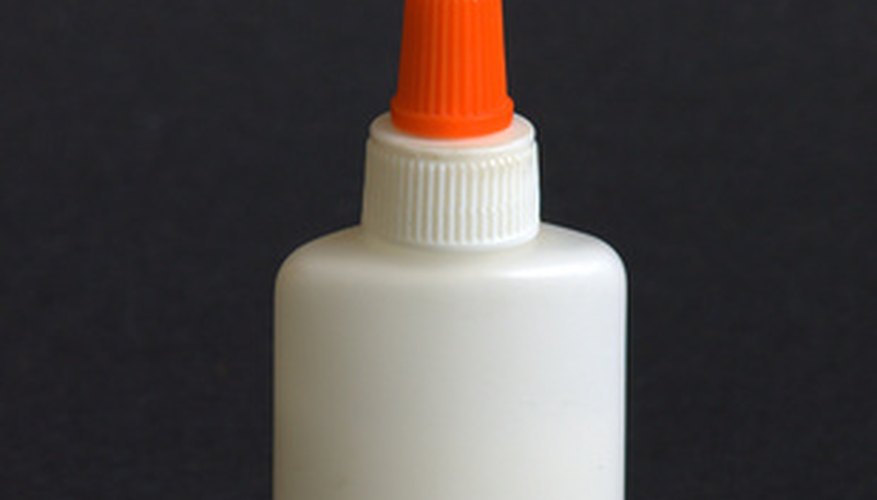Rubber glue, also known as rubber cement, is a handy element for the home toolbox. There is always a need for a strong, waterproof glue in crafts projects and general home repair. However, rubber cement and other rubber glues can be costly or run out at precisely the wrong time. Fortunately, making your own glues at home is a fairly simple process. With a little patience and a little time, you can have a tough homemade adhesive for a low price.
Bring 6 tbsp of water to a boil, and then remove from the heat. Pour in 14.2gr. (approximately two packets) of unflavored gelatin, and stir until the gelatin is completely dissolved. Add 2 tbsp of white vinegar and 2 tsp of glycerine. Stir well until the mixture gels and becomes solid. Pour the mixture into an airtight jar and seal tightly. Place the glue in a cool, dark place to gel.
- Rubber glue, also known as rubber cement, is a handy element for the home toolbox.
- Place the glue in a cool, dark place to gel.
To use the glue, fill a pot with water. Place the jar of glue into the water. Heat the water slowly, watching the glue carefully for signs of softening. Once the glue has softened, remove the jar carefully and open it. Apply the glue with a brush. It is important to use the glue while it is warm; once it cools and sets, it will be impossible to remove.
- To use the glue, fill a pot with water.
- Heat the water slowly, watching the glue carefully for signs of softening.
For a rubber glue designed specifically for glass, dissolve 14.2gr. of unflavored gelatin into a bowl with 2 tbsp of cold water. Heat 3 tbsp of skimmed milk to a boil, and then slowly add the softened gelatin. To preserve the glue, add a few drops of clove oil. Due to the presence of the milk, this glue will spoil quickly, so make small amounts and use it while it is still warm.
TIP
Use your glue immediately for best results.
WARNING
Check your glue for spoilage before using.
